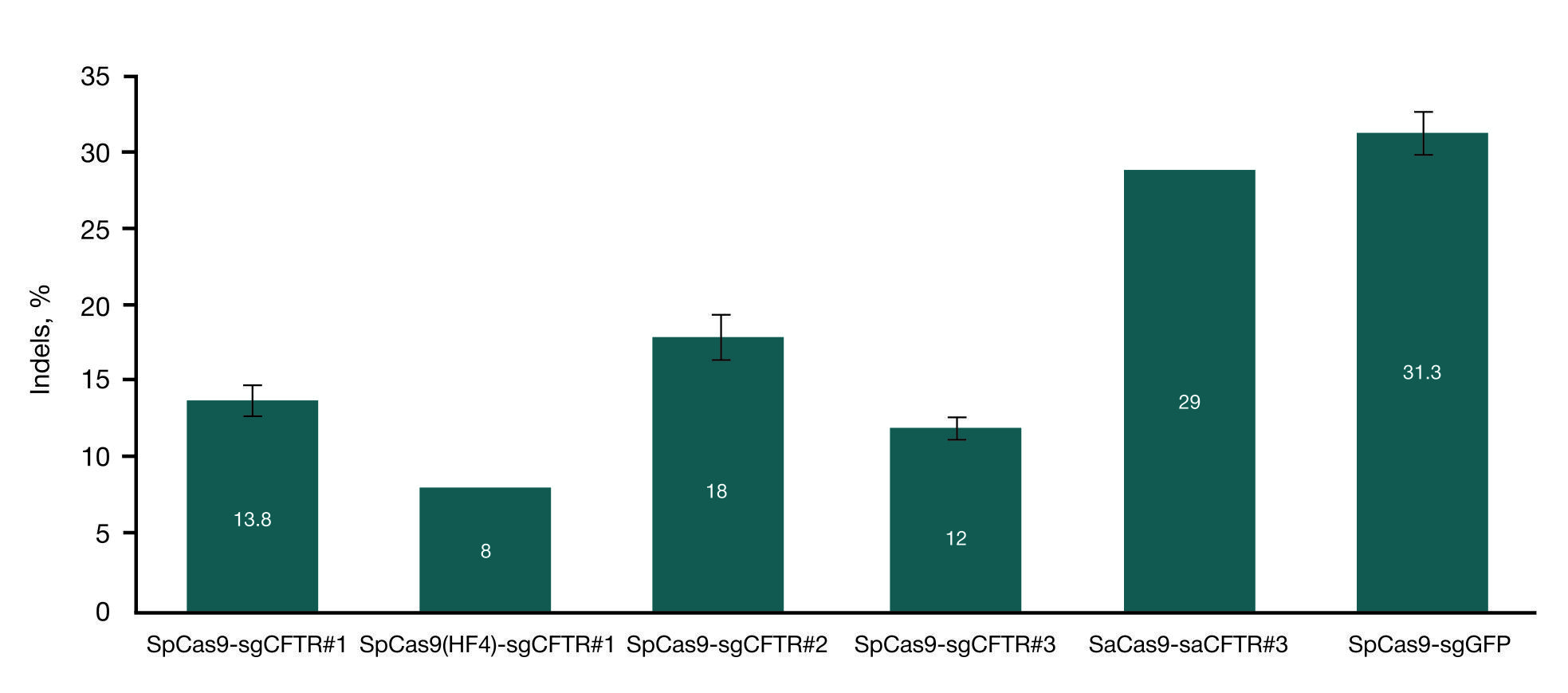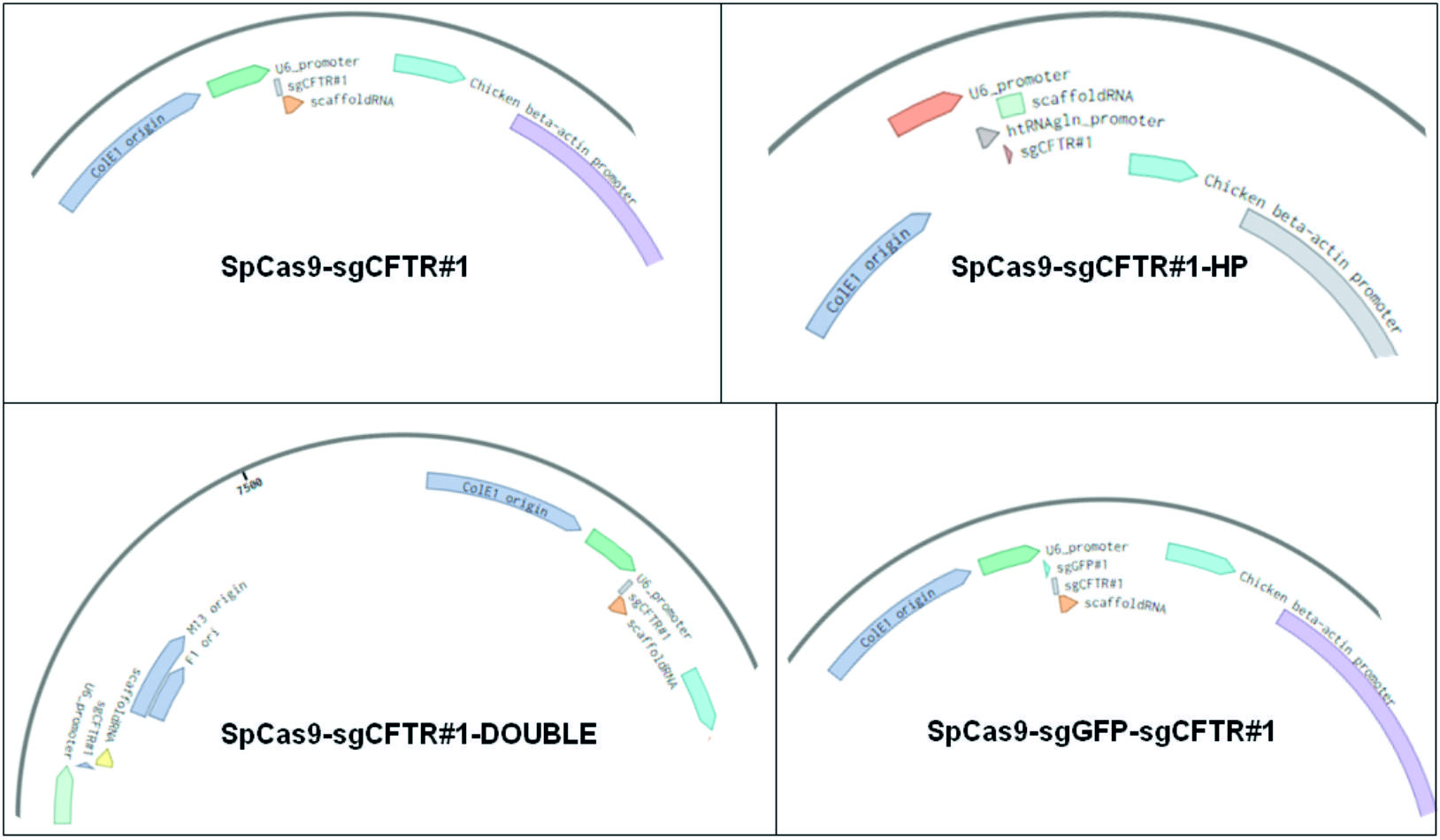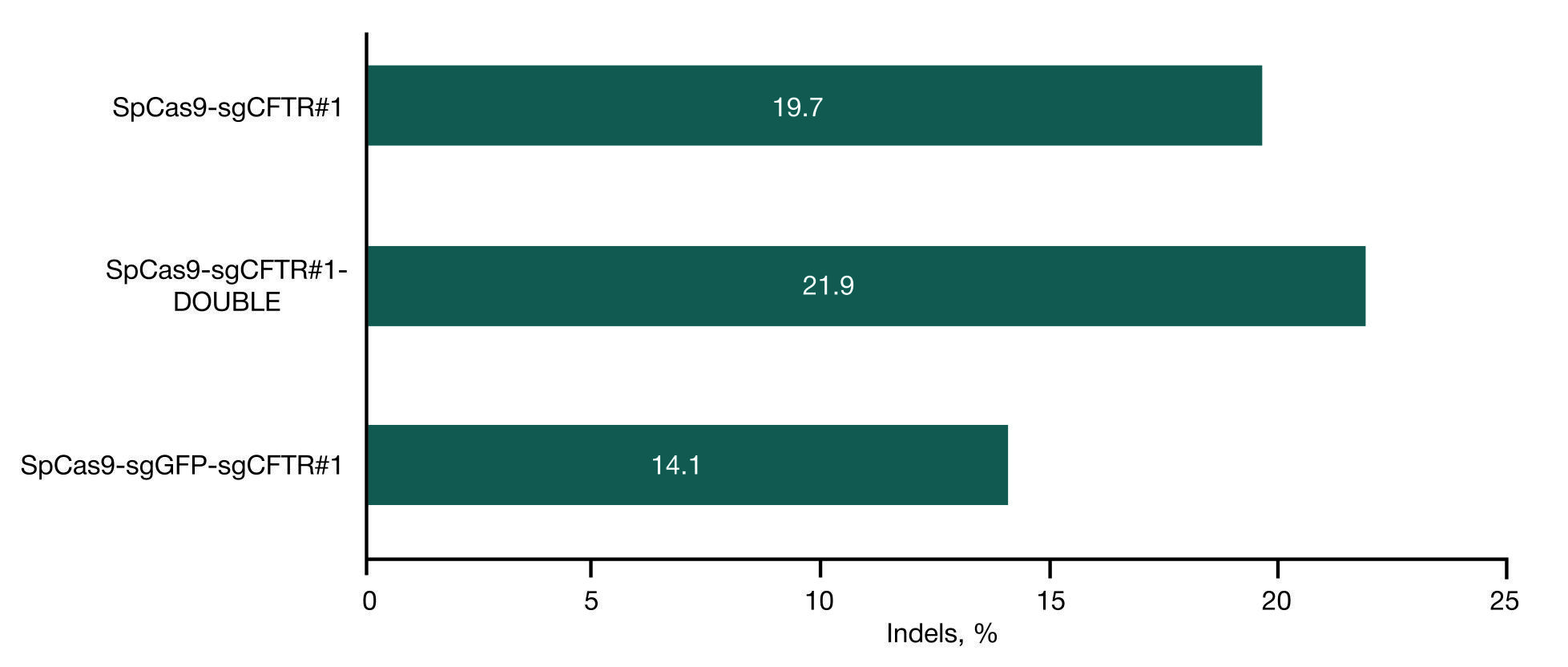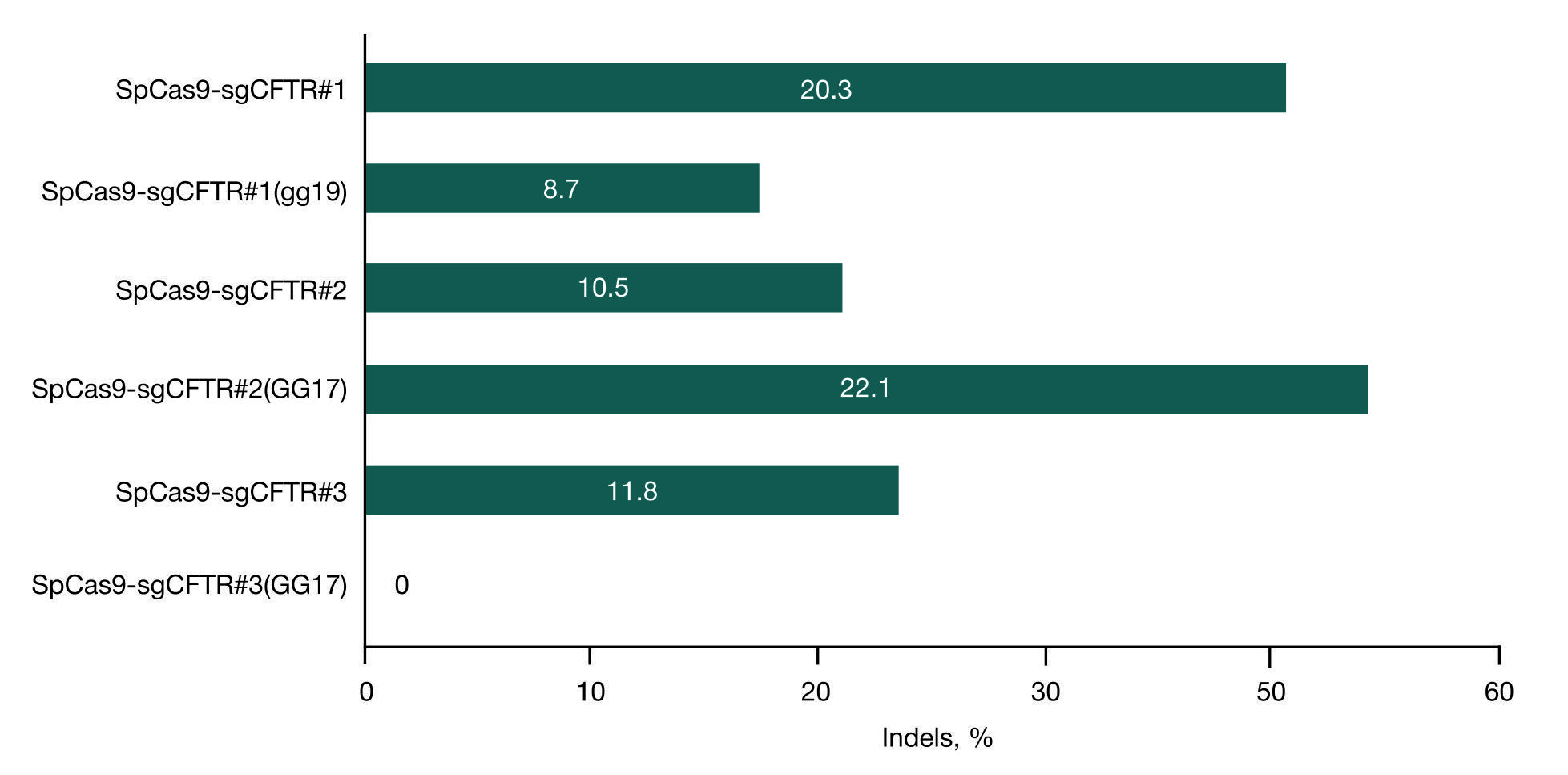
ORIGINAL RESEARCH
Experimental approaches to the target editing of the CFTR gene using CRISPR-Cas9
1 Laboratory of Mutagenesis,Research Centre for Medical Genetics, Moscow
2 Department of Molecular and Cellular Genetics, Biomedical Faculty,Pirogov Russian National Research Medical University, Moscow
Correspondence should be addressed: Svetlana Smirnikhina
Moskvorechie 1, Moscow, 115522; moc.liamg@sanihkinrims
Funding: the section Editing of the CFTR locus was supported by the grant of the Russian Science Foundation (Agreement 17-75-20095), the sections Increasing the expression of guide RNAs and Improving the efficacy of CFTR locus editing were supported by the Russian Academy of Sciences and the state assignment of FASO Russia.






